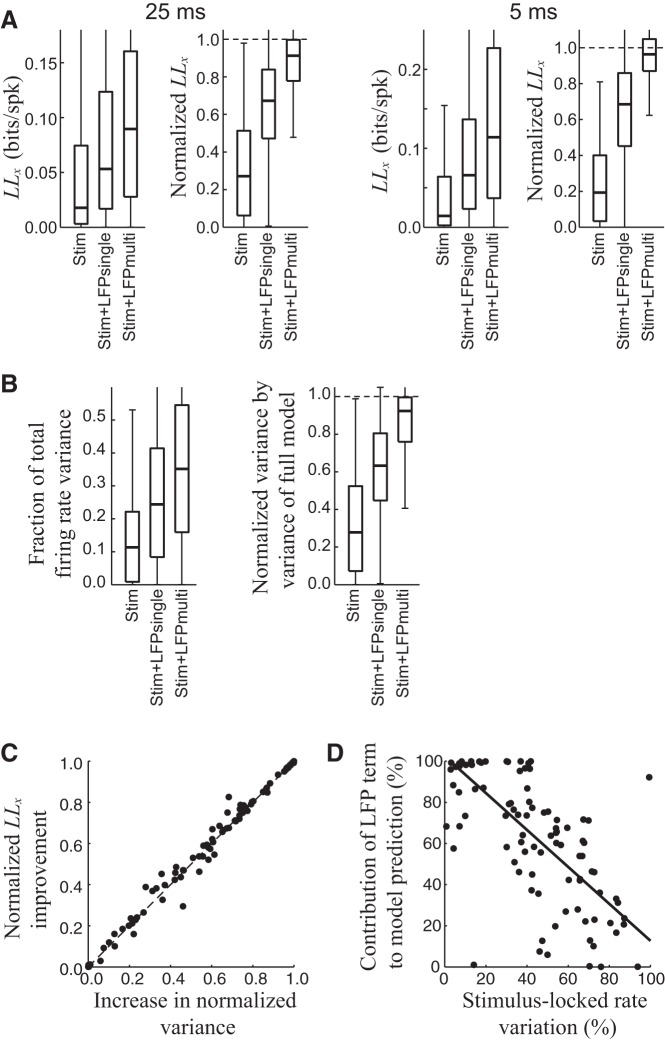Figure 3.
Dramatic improvement of model performance with the inclusion of the LFP component. A, LLx values calculated for stimulus-processing models (left), and models that included either the LFP from the same electrode (middle) or all electrodes (right), for all neurons in the study. LLx values were calculated at both 25 ms (left) and 5 ms (right) time resolution. To demonstrate the relative performance of each model across all neurons, we also normalized each LLx value by that of the best model for that neuron (introduced below), and thus no model median reaches the (dashed) unity line here. The inclusion of the LFP component yields a more than threefold improvement in performance over the stimulus-processing model at 25 ms resolution (approximately the time course of the stimulus-locked rate). When considered at a higher time resolution (5 ms), the LFP model yields a median fivefold performance improvement, due to information about finer spike timing gained from the gamma-band LFP. B, The total variance of predicted firing rates from different models, normalized by the measured variance (left) or the variance of the best model for that neuron (right). C, Model performance improvement is tightly correlated with the increase in the variance of model outputs (r = 0.984, p < 10−67). D, Improvements in model performance were greater for neurons that were less stimulus locked (r = −0.64, p < 10−10).

